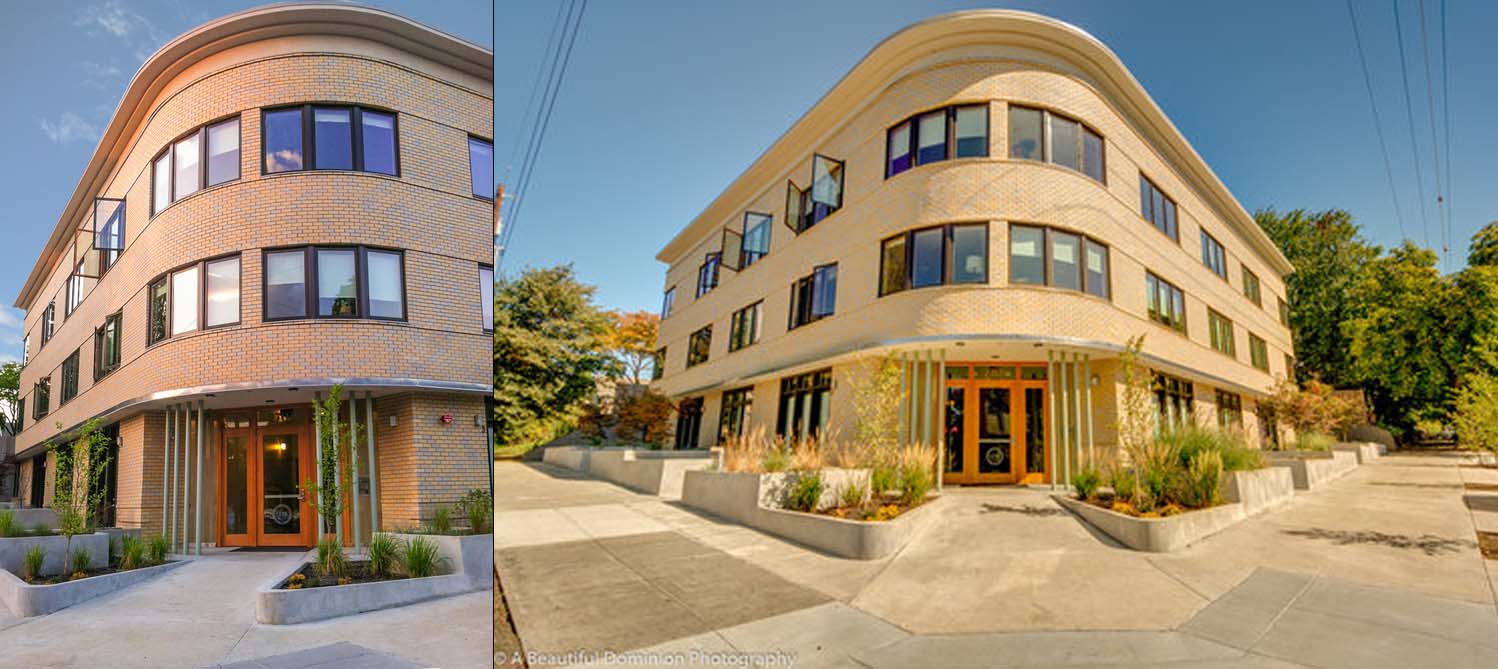Building Data:
Neighborhood: Irvington
Year Built: 1931
Typology: Cryptoplex
Units: 7
Stories: 2
Site Area: 5,000sf
Building Area: 3,524
FAR: 0.70:1
Parking: On street
Density: 60.9 du/net acre
Zoning: R1 (1 Dwelling/1,000sf)
Is it Legal? NO (but almost!)
Notes:
We’re going to call this odd but wonderful little building a “megacryptoplex” because like other cryptoplexes, it looks like a single family dwelling, yet it houses not two, but seven(!) separate dwelling units. At a net density of nearly 61 du/ac, this building packs a lot of housing in a very unobtrusive, neighborhood scaled package. Moreover, it does so at a fairly low FAR of 0.7:1.
Viewed from the street, the building presents as a one and a half story cottage. The front door provides access to two mirrored side-by-side units on the ground floor, while a stair leads to an attic unit. The other four units are reached from a friendly looking communal side yard. The building gets wider in steps, with the projections providing several street facing main entries to the back units.
Detail showing side-loading units.
This axon view represents our best guess of the internal configuration of the building. It’s actually a testament to its subtle design that it is not readily apparent how the interior is partitioned when looking at the building from outside.
Axonometric diagram
Axonometric aerial from Google Earth
In our experience, this building is unique in Portland. It most closely resembles a one-and-a-half wing courtyard segment, but even then, its stacked configuration has no analog in any other typology we have documented. This building exceeds the density in the R1 zone, but we can envision several code hacks in which it could legally be replicated.
Site Plan






























